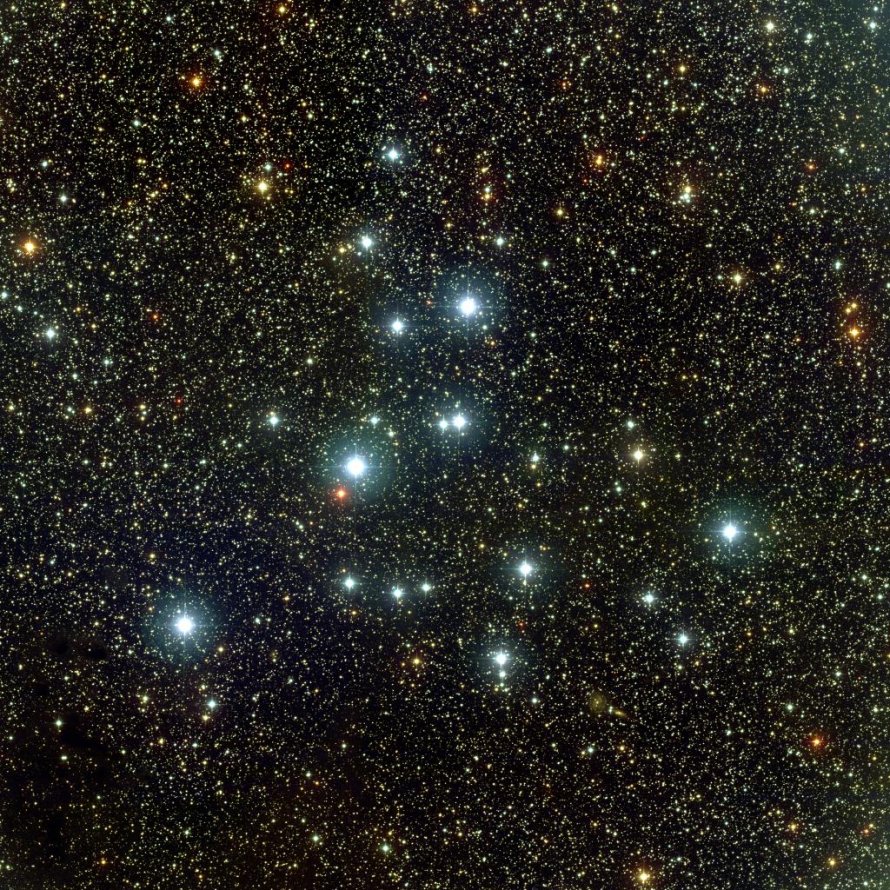M39 (NGC 7092)
Messier 39 (NGC 7092) is an open cluster located in the constellation Cygnus, in the Orion Arm of the Milky Way Galaxy in the Local Group of galaxies. M39 is 1000 light years away from Earth.
M39 is best viewed during early spring, is magnitude 5.5, and can be viewed with naked eye (barely). M39 is 29' in apparent size. For reference, the full moon is 30'.
Observing difficulty: Easy
- Name:
- Type:
- open cluster
- Constellation:
- Cygnus
- NGC or IC:
- NGC 7092
- Magnitude:
- 5.5
- Viewing:
- naked eye (barely)
- Size:
- 29'
- Distance (light years):
- 1000 LY
- RA:
- 21h 32.2m
- Dec:
- 48 26'
- Season:
- early spring
- Milky Way location:
- Orion Arm
- Galaxy group:
- Local Group
- Messier Marathon #:
- 74
* The naked eye can see up to magnitude ~7-8 objects under ideal dark sky conditions.
A Bright Blue Gem in Cygnus
Messier 39 (M39 or NGC 7092) is an open star cluster located in the constellation Cygnus, the Swan. It is noted for its brightness and for the ease with which it can be found in the night sky. In this article, we will take a detailed look at M39's characteristics, its historical background, and practical advice on how to best observe it.
Historical Background
First recorded by Guillaume Le Gentil in 1750, M39 was later added to Charles Messier's famous catalogue in 1764. The aim of Messier?s catalogue was to list the 'nebulous' objects that could be easily mistaken for comets by comet hunters. M39, with its fuzzy and cloud-like appearance to the naked eye, earned its place in this catalogue.
Physical Properties and Magnitude
Messier 39 is relatively close to us in astronomical terms, lying at a distance of about 800 light-years from Earth. The cluster is roughly 230 to 280 million years old and spans an area of about 7 light years across. It consists of over 30 stars, with the three brightest members being of spectral types B2, B3, and B5, all blue giants.
The combined light of the stars in M39 gives the cluster an apparent magnitude of 5.5, which means it is visible to the naked eye under good conditions. This makes M39 one of the brightest Messier objects in the night sky.
Astronomical Significance
M39 is of particular interest to astronomers due to its relative proximity to Earth and its status as an open cluster. These clusters are formed from the same gas cloud, so their stars are all roughly the same age and composition. Studying M39 gives astronomers insights into stellar evolution, particularly of massive blue stars, and the dynamics of stellar clusters.
Finding and Observing M39
The constellation Cygnus is quite easy to locate as it is part of the prominent Summer Triangle asterism, visible in many parts of the world during summer and fall nights. M39 is located about 9 degrees east-northeast of the bright star Deneb, the tail of the swan.
While M39 is visible to the naked eye in dark skies, it appears as a small, nebulous patch of light. Binoculars or a small telescope with a wide field of view will resolve the cluster into its individual stars and reveal its characteristic triangular shape. Larger telescopes will offer more detail, but due to the cluster's size, a low magnification is generally best.



